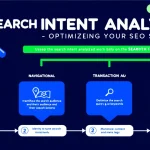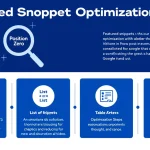Content Performance Analysis
Is this tool helpful?
How to Use the Content Performance Analysis Tool Effectively
To get the most accurate insights from the Content Performance Analysis Tool, follow these steps carefully:
- Website URL: Enter the full website address you want to analyze. For example, “https://healthylivingtips.org” or “https://urbanphotographyhub.com”. Make sure to include “http://” or “https://”.
- Analysis Time Period: Choose the period over which you want to review your content performance. Example selections could be “last quarter” or “previous 9 months”.
- Content Types: Select the content categories to analyze. You can examine multiple types by holding Ctrl or Cmd while selecting. For example, choose “case studies” and “tutorials” simultaneously to get a comprehensive report.
Introducing the Content Performance Analysis Tool
The Content Performance Analysis Tool helps you evaluate the effectiveness of your website’s content to boost search rankings and engage your audience better. By analyzing your content’s performance over customizable time frames and across various content types, this tool reveals opportunities to optimize SEO and user experience.
With detailed data insights, you can identify which pieces of content excel, which need attention, and understand how visitors interact with your site. This leads to smarter content updates and stronger organic traffic growth.
Key Benefits of the Tool
- Spot underperforming blogs, product pages, or articles quickly
- Discover new keyword opportunities tailored to your content
- Track user engagement and traffic trends over months or years
- Save time by automating content audits and insights generation
- Make informed decisions with actionable SEO performance indicators
Practical Uses of the Content Performance Analysis Tool
You can apply the tool in many ways to improve your digital content strategy. Here are some examples:
Content Audit for Blog and Article Updates
- Identify articles with declining traffic and low engagement
- Find outdated information needing revision to stay relevant
- Uncover gaps in keyword targeting for better SEO optimization
Improving SEO on Product or Service Pages
- Evaluate the effectiveness of product descriptions and titles
- Discover opportunities to enhance meta descriptions and internal links
- Align page content with user search intent for higher conversions
Tracking Performance Over Time
Monitor content trends across selected time frames to measure the impact of past updates. This helps you refine your content calendar and prioritize future optimization efforts based on real, measurable results.
Core Elements Analyzed by the Tool
- Traffic patterns: Understand visitor flow to individual content pieces.
- Keyword usage: Identify opportunities to add or improve target keywords.
- Content relevance: Assess alignment with current audience interests and search trends.
- User engagement: Analyze metrics like average reading time and bounce rates.
- SEO performance: Gain insights on rankings, link structure, and metadata.
Addressing Content Performance Challenges
Finding and Filling Content Gaps
The tool pinpoints where your content may fall short, including:
- Topics that need fresh updates or expansion
- Missing keywords your competitors target
- Old information that no longer matches user intent
Identifying Optimization Opportunities
Use results to improve SEO and content quality by focusing on:
- Enhancing title tags with relevant keywords
- Writing compelling meta descriptions for better click-through rates
- Improving content structure for readability and flow
- Adding relevant internal links to boost navigation and SEO
Best Practices for Using the Content Performance Analysis Tool
Consistent Content Audits
- Schedule regular reviews every 3-4 months
- Keep track of performance metrics and update logs
- Analyze seasonal changes and adjust content accordingly
Focused Content Updates
- Prioritize updates on high-impact pages first
- Refresh outdated statistics, links, and case studies
- Integrate enhanced visuals like images and infographics
Frequently Asked Questions About Content Performance Analysis
How often should I run content performance analysis?
Run the analysis every 3 to 4 months for general websites. For fast-changing industries or high-traffic sites, monthly checks provide timely insights.
Which content types can I analyze?
You can analyze blog posts, product pages, articles, landing pages, and other website content categories to get a broad understanding of your content health.
Can I analyze multiple content types at once?
Yes, the tool supports multi-select so you can compare and optimize different content types in one session.
What metrics should I prioritize when optimizing content?
Focus on organic traffic trends, average user engagement time, bounce rates, conversion rates, and keyword rankings relevant to your business goals.
How can I measure success after updating content?
Evaluate changes in traffic volume, audience engagement, conversion metrics, and search engine rankings before and after updates to gauge impact.
Maximize Results by Integrating Tool Insights Into Your Content Strategy
Align with Business Objectives
- Use insights to update content that drives your core business goals
- Coordinate content improvements with your marketing campaigns
- Plan updates around seasonal trends and audience demands
Maintain Long-Term Performance Monitoring
- Track performance trends through regular data reviews
- Document optimization results to inform future updates
- Measure return on investment (ROI) for your content efforts
Important Disclaimer
The calculations, results, and content provided by our tools are not guaranteed to be accurate, complete, or reliable. Users are responsible for verifying and interpreting the results. Our content and tools may contain errors, biases, or inconsistencies. Do not enter personal data, sensitive information, or personally identifiable information in our web forms or tools. Such data entry violates our terms of service and may result in unauthorized disclosure to third parties. We reserve the right to save inputs and outputs from our tools for the purposes of error debugging, bias identification, and performance improvement. External companies providing AI models used in our tools may also save and process data in accordance with their own policies. By using our tools, you consent to this data collection and processing. We reserve the right to limit the usage of our tools based on current usability factors.







